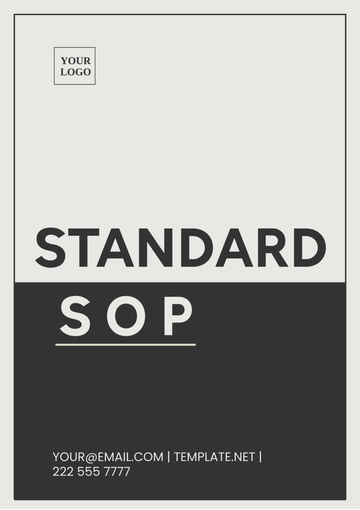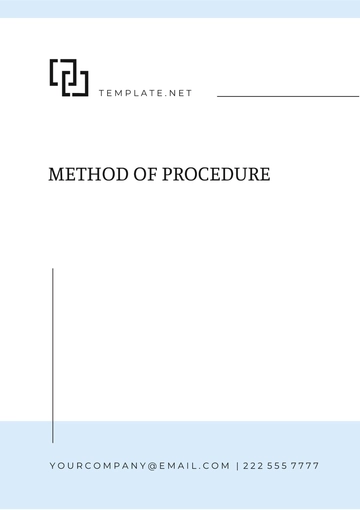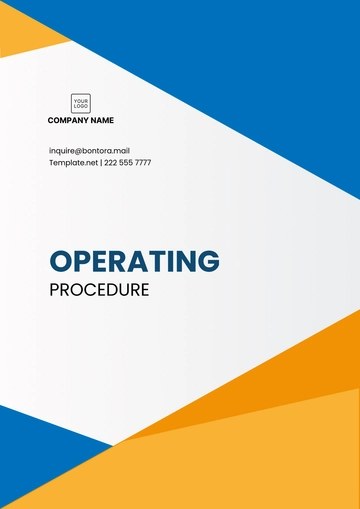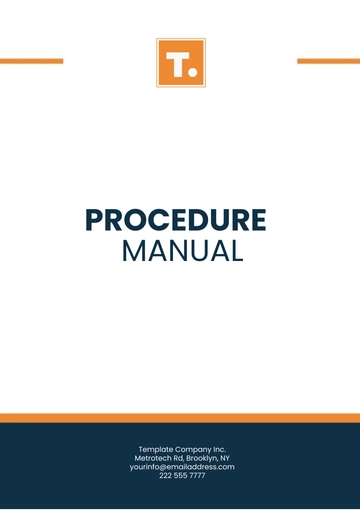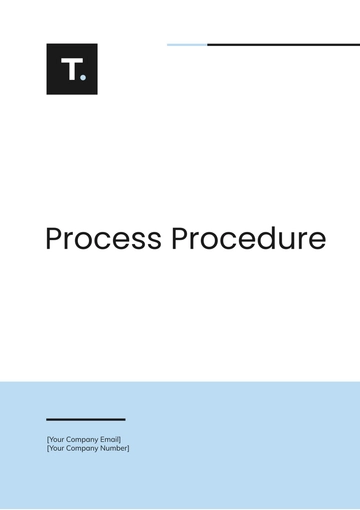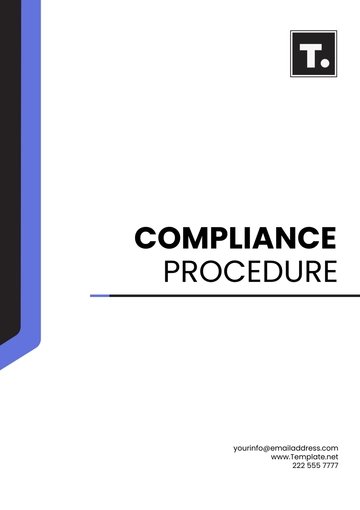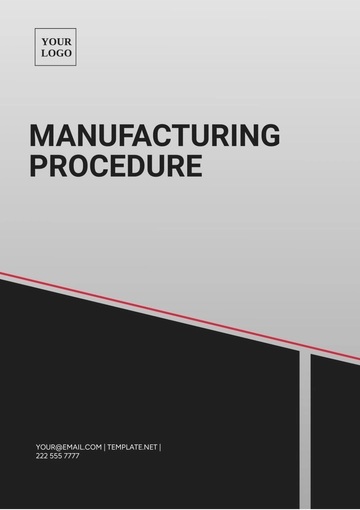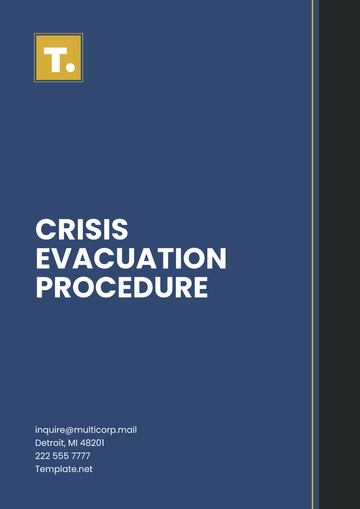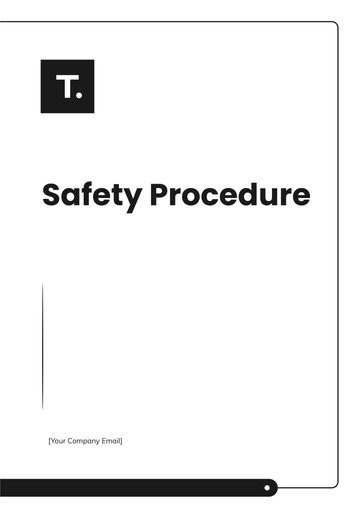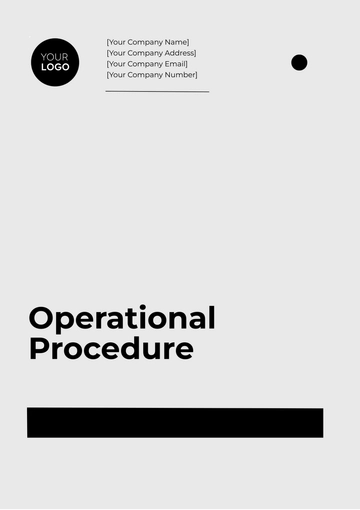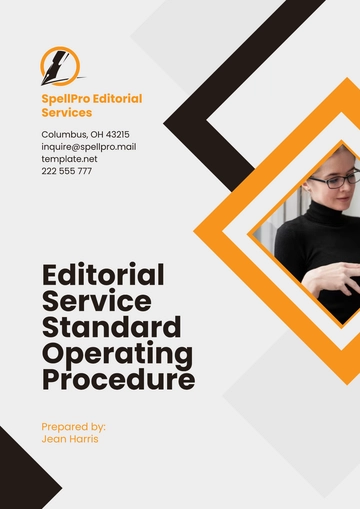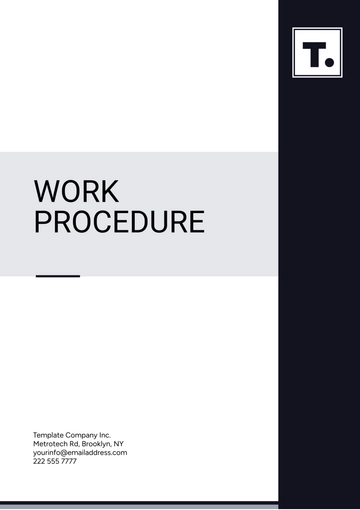Free Solar Energy Procedure

I. Introduction
The following procedures outline the guiding principles and practical steps for ensuring efficient, safe, and compliant solar energy production. The purpose of the procedures are to articulate the core objectives of the company’s solar energy policies. It outlines the rationale behind our approach to solar energy development, emphasizing the alignment of business goals with environmental sustainability.
Promote Renewable Energy: The policy aims to support the global shift towards renewable energy by maximizing the use of solar power in all of our projects.
Ensure Compliance: All solar energy projects comply with local, national, and international environmental laws and energy regulations.
Improve Energy Efficiency: Procedures focus on enhancing energy efficiency at every stage, from planning and development to maintenance and operations, ensuring optimal performance.
II. Scope
This section defines the applicability of the policy and outlines the projects, personnel, and phases of operation that are subject to the solar energy policy and procedures. It ensures that the policy covers every critical aspect of solar energy production.
Applicable Projects: The policy applies to all residential, commercial, and industrial solar projects undertaken by [Your Company Name].
Employee and Contractor Coverage: All employees, subcontractors, and business partners involved in solar energy operations must comply with these procedures.
Phases of Operation: The policy covers every phase of solar energy development, from initial site assessment to final installation, ongoing maintenance, and decommissioning when necessary.
III. Solar Energy Development Process
Developing solar energy systems requires a structured and efficient approach. This section outlines the step-by-step procedures for solar energy development, ensuring every project meets performance and sustainability goals.
Site Assessment: Conduct feasibility studies to assess the solar potential, environmental impact, and project viability of a proposed site. Evaluate geographical, climatic, and environmental conditions to ensure the site is suitable for long-term solar production.
Design and Planning: Develop detailed design plans that include the layout of solar panels, system size, and electrical components. Collaborate with environmental consultants to minimize the impact on local ecosystems and communities.
Installation and Testing: Use qualified installers to carry out panel installation following all safety protocols. After installation, perform rigorous testing to ensure panels meet performance and efficiency standards.
Ongoing Maintenance: Set up regular maintenance schedules for cleaning, inspections, and repairs to ensure optimal performance. Monitor energy output and make adjustments as needed to maximize efficiency.
IV. Environmental Sustainability
This section ensures that the company’s solar energy operations prioritize reducing the environmental footprint while promoting responsible use of natural resources.
Use of Eco-Friendly Materials: Incorporate recyclable and low-impact materials in solar panel production and installation. Ensure all operational components minimize waste generation and pollution.
Waste Management: Develop waste management strategies that prioritize the recycling and safe disposal of obsolete solar panels and components. Implement procedures for managing hazardous materials related to solar energy production.
Water Conservation: Ensure that solar installations in water-scarce areas implement technologies and techniques that conserve water resources, particularly during panel cleaning and cooling processes.
Carbon Footprint Reduction: Prioritize initiatives that offset carbon emissions, including carbon-neutral installation practices and the use of electric vehicles in service operations.
V. Health and Safety Procedures
Maintaining a safe work environment is paramount in all solar energy projects. This section outlines the procedures designed to protect the health and safety of employees, contractors, and the community during solar project operations.
Employee Safety Training: All staff receive comprehensive training on safety protocols, including handling electrical equipment and emergency response procedures. Specialized training is provided for workers responsible for installing solar panels at heights or in hazardous environments.
Personal Protective Equipment (PPE): Ensure that all personnel involved in the installation and maintenance of solar systems wear appropriate PPE, such as helmets, gloves, and safety harnesses. Regularly inspect PPE to ensure it meets current safety standards.
Emergency Protocols: Establish clear emergency response procedures for handling accidents, including electric shocks, falls, and exposure to hazardous materials. Conduct periodic drills to ensure readiness for unexpected events, such as fires or severe weather.
VI. Energy Efficiency and Innovation
[Your Company Name] embraces innovation and technology to improve energy efficiency in solar operations. This section outlines procedures for incorporating new technologies and approaches that enhance system efficiency and reduce costs.
Research and Development: Invest in ongoing research and development (R&D) to discover new methods for improving solar panel efficiency and energy storage capabilities. Collaborate with technology partners to introduce cutting-edge technologies that improve solar output.
System Optimization: Regularly review and upgrade existing systems to enhance energy efficiency, extending their operational lifespan and maximizing return on investment. Implement automation where possible to streamline energy monitoring and system control.
Energy Storage: Invest in battery storage solutions that allow for the capture and use of surplus solar energy, reducing reliance on the grid. Continuously assess advancements in energy storage technology to enhance the storage capacity of solar systems.
VII. Compliance and Regulatory Adherence
Compliance with regulatory requirements ensures that [Your Company Name] operates in line with industry standards and legal obligations. This section details procedures for staying compliant with local, state, and federal laws governing solar energy projects.
Regulatory Updates: Regularly review updates to environmental and energy regulations to ensure compliance with evolving legal standards. Ensure that all projects are planned and executed in accordance with regulatory permits and approvals.
Collaboration with Authorities: Maintain open communication with local regulatory authorities to facilitate project approvals, inspections, and compliance reviews. Participate in industry forums and discussions to stay informed about potential regulatory changes.
Internal Audits: Conduct regular internal audits to ensure compliance with safety, environmental, and operational standards. Address any deficiencies or gaps in compliance through corrective actions and continual improvement efforts.
VIII. Employee Training and Development
To maintain the highest standards of operational excellence, [Your Company Name] invests in the continuous training and development of its workforce. This section outlines the training programs designed to enhance employee skills and ensure adherence to company standards.
Mandatory Training Programs: All employees must complete mandatory training related to safety, compliance, and technical skills specific to solar energy operations. Refresher training is required annually to ensure all personnel stay current with industry advancements and safety regulations.
Specialized Certifications: Employees are encouraged to pursue industry-recognized certifications to enhance their expertise in solar technology, installation, and energy efficiency. The company sponsors certification programs that improve job performance and career growth opportunities.
Cross-Functional Training: Cross-functional training programs promote collaboration across departments, ensuring that employees understand the full scope of solar energy projects and can contribute to multiple areas of operations.
Employee Training Programs and Schedule
Program | Frequency | Description |
|---|---|---|
Solar Installation Techniques | Quarterly | Practical training on installing various types of solar panels and systems. |
Safety Protocols and Compliance | Annually | Comprehensive safety training for hazard prevention, emergency response, and PPE use. |
Solar Technology Updates | Bi-Annually | Latest updates on solar technologies, innovations, and industry trends. |
IX. Stakeholder Engagement
Collaborating with stakeholders is essential to the success of our solar projects. This section outlines the procedures for engaging with local communities, government authorities, and other stakeholders to build lasting partnerships and minimize conflicts.
Community Involvement: Host public forums and community meetings prior to commencing solar projects to ensure local stakeholders understand the project's benefits and impact. Establish an open line of communication to address any community concerns throughout the project lifecycle.
Transparency in Operations: Provide regular updates on project progress, environmental impact assessments, and energy production to relevant stakeholders. Ensure that project details are accessible to the public and stakeholders, including site plans, timelines, and sustainability goals.
Collaborative Partnerships: Work with local businesses, governments, and environmental organizations to create shared value through solar energy development. Engage with advocacy groups to promote renewable energy initiatives and foster support for clean energy policies.
X. Monitoring and Continuous Improvement
Continuous monitoring and improvement are critical to maintaining high standards in solar energy production. This section outlines the processes for tracking solar project performance and implementing improvements based on performance data and feedback.
Real-Time Performance Monitoring: Use advanced monitoring technology to track solar energy production and system efficiency in real-time. Address any performance issues or inefficiencies immediately to ensure systems operate at peak capacity.
Performance Reporting: Prepare detailed quarterly reports that outline energy production, financial performance, and environmental impact metrics. Share these reports with stakeholders to ensure transparency and accountability.
Continuous Improvement Plans: Implement a continuous improvement strategy that incorporates lessons learned from past projects and integrates feedback from stakeholders. Regularly review and update operational procedures to align with technological advancements and best practices.
The Procedures for [Your Company Name] ensures that all solar energy operations are carried out with a focus on efficiency, safety, environmental stewardship, and compliance. By adhering to these policies and procedures, we contribute to the global transition towards renewable energy while maintaining the highest operational standards in the solar industry.
- 100% Customizable, free editor
- Access 1 Million+ Templates, photo’s & graphics
- Download or share as a template
- Click and replace photos, graphics, text, backgrounds
- Resize, crop, AI write & more
- Access advanced editor
Streamline your renewable energy operations with the Solar Energy Procedure Template from Template.net. This editable and customizable template helps you develop clear procedural guidelines. Tailor the layout and content to your company's specific needs using our Ai Editor Tool, ensuring that your procedures are professional and aligned with industry best practices.
